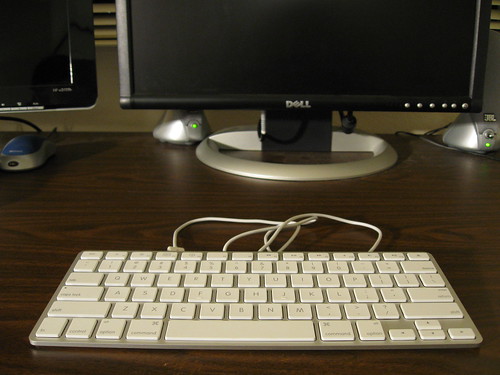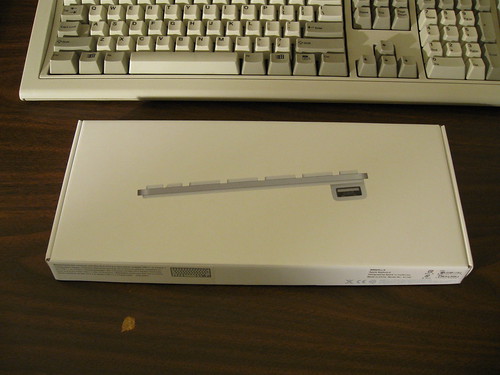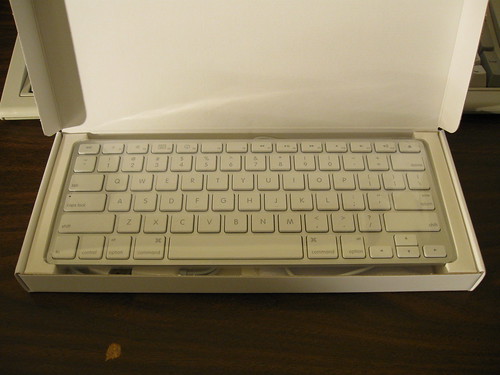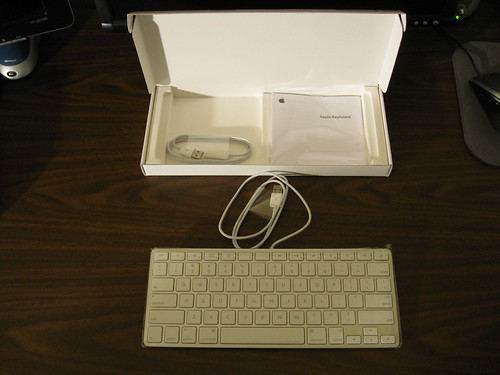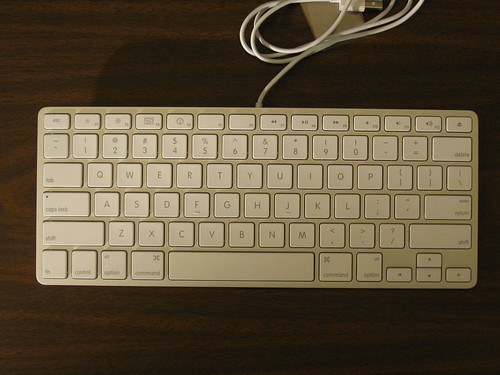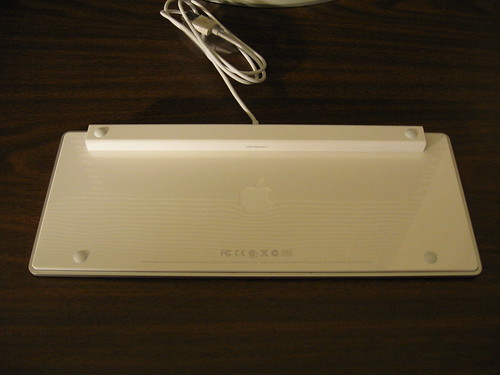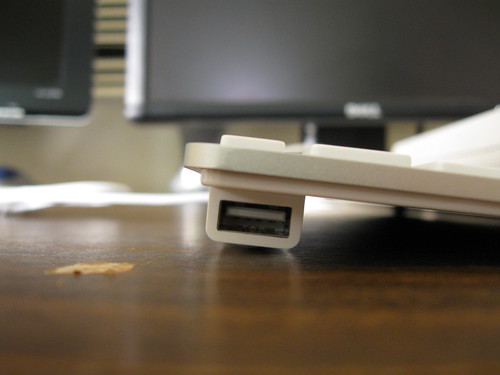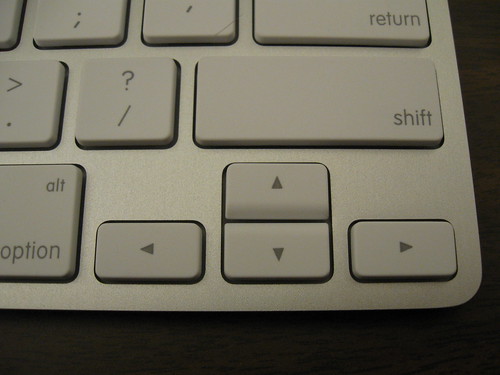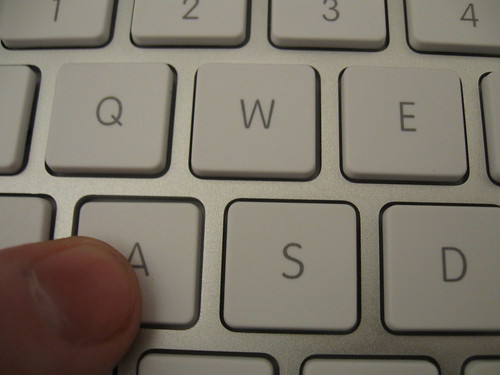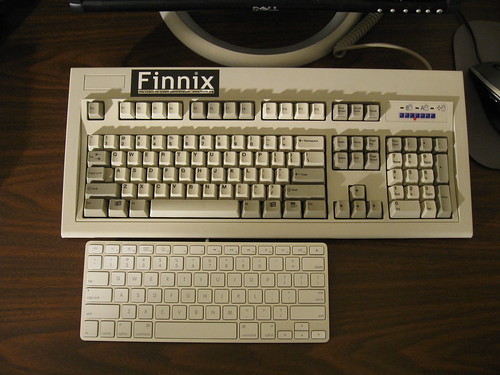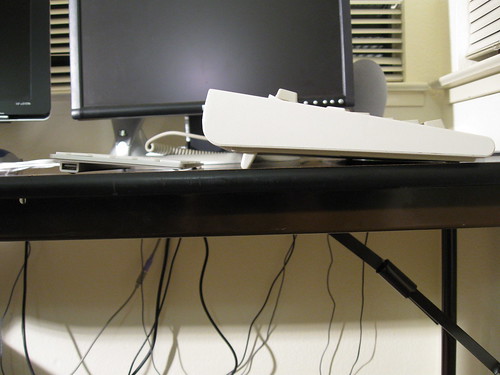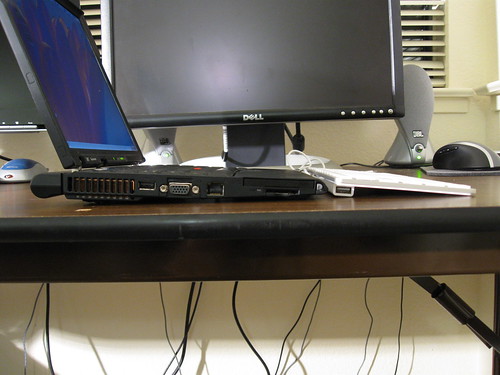New keyboard
Along with the bevy of (mostly minor) upgraded Apple hardware yesterday came the non-announcement of a new keyboard. (As of this writing, it was available in the store, but not mentioned on the product page.) This new keyboard is almost the exact same as the old one, but does not include the center cluster or numeric pad. The fanboys are up in arms because these are being included at retail with the new iMacs and Mac Pros, and are the default choice for online orders (though you can substitute a regular-sized keyboard at no extra charge).
Personally, I agree that including them with new desktops is a bad idea. Of course, that’s not to say I don’t like it. Indeed, it fills a niche for me. I bought it to be a “wherever” keyboard. A keyboard I can easily throw in my backpack. Something that’s small and light without being, well, small and cheap. Today’s “netbooks” are largely useless to me because I simply cannot type on them. (I had a Fujitsu LifeBook P-series (with a Transmeta CPU) back in 2004, before the term “netbook” existed. I returned it within a week because of the keyboard.) Likewise, I wanted something that wouldn’t just snap if you threw it around. This keyboard has full-sized keys, is light (355 grams, or 12.5 ounces) and seems pretty durable.
Below is an unboxing (UNBOXING! WOO! SHOW US YOUR SKUS!), and a comparison against the Unicomp Customizer 104, my primary desktop keyboard, and the Lenovo X61, my primary laptop.
By the way, there is a technological anachronism somewhere in the photos below. The first one to point it out wins… well, nothing.
The unwrapped box (came wrapped in plastic, not shown). Also of interest to cardboard box geeks: the UPC label and the system requirements label.
The opened box. The keyboard is wrapped in Apple’s typical sticky plastic.
Below the keyboard is a manual and a keyed USB extension cable. It has been scientifically proven that Apple keyboards use keyed extension cables (which only work with their keyboards) because they hate you, and the thought of using it with another device makes them sick. You should be ashamed of yourself.
The keyboard, without plastic covering.
The underside of the keyboard is glossy plastic, with four LRF.
The keyboard is quite thin. Sorry, I don’t have a ruler handy, and Apple’s site doesn’t list dimensions, but I would assume it’s the same height as the regular-sized USB keyboard.
On each side is a USB port.
The layout is identical to an Apple Bluetooth keyboard or a MacBook keyboard. My initial impression of the MacBook keyboards when they came out were that the keys were too wobbly. These feel sturdier.
A depressed key. (Or is that, “depressed A key”?)
The keyboard, next to my Unicomp Customizer 104. The Unicomp Customizer is the direct descendant of the IBM Model M keyboard, unarguably the best keyboard made, ever.
Height comparison. The Apple keyboard weighs 355 grams (12.5 ounces), while the Unicomp weighs 1925 grams (4 pounds, 3.9 ounces).
The Apple keyboard is slightly wider than my Lenovo X61.
The tallest point on the Apple keyboard lines up nearly perfectly with the lowest point on the X61. The Apple keyboard weighs 355 grams (12.5 ounces), while the X61 (with extended battery) weighs 1639 grams (3 pounds, 9.8 ounces). Yes, my laptop weighs less than my Unicomp keyboard.
